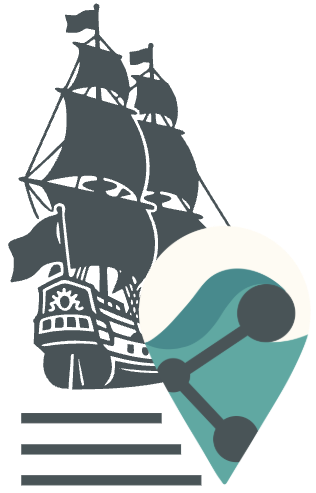Necessary ReunionsProject
Remarrying Maps to Text and Reconceptualizing Histories of Early Modern Kerala

Project Tools
These tools provide access to reintegrated data from VOC textual archives and maps of early modern Kerala, using techniques of georeferencing and machine-generated transcriptions.
re:Charted
View 30 Kerala maps from the VOC, coming from various archives like the Leupe collection at the National Archives in The Hague. See the annotation and georeferencing results of these historic maps using LOD and IIIF standards.
Grote atlas van de Vereinigde Oost-Indische Compagnie (GAVOC)
Historical thesaurus based on the locations mentioned in the Grote atlas van de Vereinigde Oost-Indische Compagnie (GAVOC) and transforms them to modern coordinates and places. And furthermore, provides URIs for linking historical references.
Gazetteer
Places located on 30 maps in re:Charted, connected to show the history and transition of places in the area of Kerala, India.
Frequently Asked Questions
What is the Necessary Reunions project?
Historical maps and documents from the Dutch East India Company (VOC) tell richer stories when brought back together. We are annotating thirty Kerala maps from the Leupe collection at the National Archives in The Hague and thereby locating places on these maps and linking them to modern geographical data.
How does the project use digital tools and AI?
The project utilises MapReader and Loghi AI to locate handwriting on historical maps and documents. For the icons and symbols on the maps, the Meta AI Segment Everything is used. For storing the data, the AnnoRepo is used, and we use IIIF to serve the images. For the creation of the user interface, Next.js and React are used.
How does the project use the "Grote atlas van de Vereinigde Oost-Indische Compagnie (GAVOC)"?
The locations mentioned in the Grote atlas van de Vereinigde Oost-Indische Compagnie were connected to the current modern name and coordinates. These can then be viewed and explored on a modern map environment, the GAVOC (Grote atlas van de Vereinigde Oost-Indische Compagnie) tool. Furthermore, the names were linked, forming a historical thesaurus of place names, that can be used as an external reference for linking historical locations via an API to other datasets.
Can I contribute annotations or access the source code?
Right now, the Necessary Reunions team handles all the annotations. But if you're interested in the technical side, all code is freely available on GitHub. The data that is created in the scope of the project will eventually be part of the larger GLOBALISE project.
Who is behind this project?
The project is led by Manjusha Kuruppath (Huygens Institute) and Leon van Wissen (University of Amsterdam), with team members Jona Schlegel (Huygens Institute / archaeoINK), Meenu Rabecca (University of Leiden) and Pham Thuy Dung (Huygens Institute). It's funded by the NWO XS (March–December 2025) and conducted at the Huygens Institute.